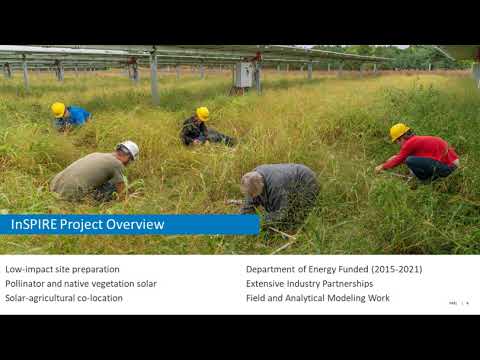Sun on Agricultural Lands–Maintaining Pollinator Habitat and Soil Well being
The interest in using farmland for solar development has grown in recent years, spurred by a rapid decline in solar prices and an increase in aggressive state renewable energy standards. As interest in farmland solar has grown so has the concern over its potential environmental and food impacts, and in particular its impacts on pollinators. One-quarter of U.S. agriculture production relies on bees, which have seen record declines in recent years, pushing many species close to extinction. Fields that are cleared for solar installations can harm pollinators that depend on vegetation for habitat and food. Solar installations can also harm soil health by increasing erosion. Can agriculture, solar and pollinators coexist in a way that benefits all three? This webinar will explore this question, highlighting state efforts to implement environmentally friendly solar siting policies for agricultural lands.
SPEAKERS:
Maggie Clark, state affairs senior manager for the southeast, Solar Energy Industries Association
Jordan Macknick, lead energy-water-land analyst, Strategic Energy Analysis Center at the National Renewable Energy Laboratory
Gerry Palano, energy coordinator, Massachusetts Department of Agricultural Resources


No Comments